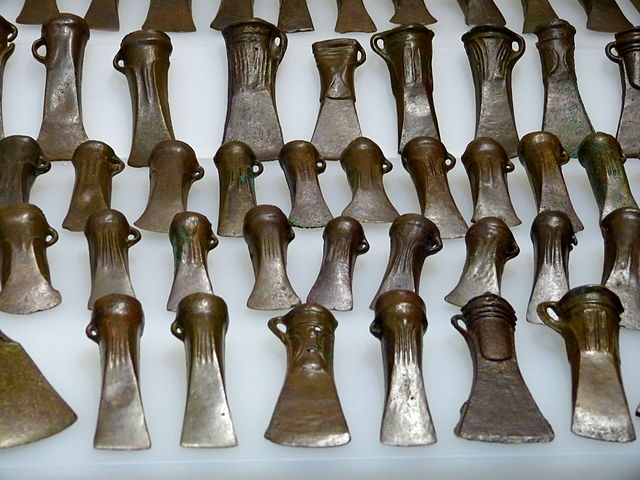Aluminium bronze is a type of bronze in which aluminium is the main alloying metal added to copper, in contrast to standard bronze or brass. A variety of aluminium bronzes of differing compositions have found industrial use, with most ranging from 5% to 11% aluminium by weight, the remaining mass being copper; other alloying agents such as iron, nickel, manganese, and silicon are also sometimes added to aluminium bronzes.
The large plates in the background are made of aluminium bronze
5 franc coins made of aluminium bronze from 1940
Bronze is an alloy consisting primarily of copper, commonly with about 12–12.5% tin and often with the addition of other metals and sometimes non-metals, such as phosphorus, or metalloids such as arsenic or silicon. These additions produce a range of alloys that may be harder than copper alone, or have other useful properties, such as strength, ductility, or machinability.
Houmuwu ding (Chinese: 后母戊鼎; pinyin: Hòumǔwù dǐng), the heaviest Chinese ritual bronze ever found; 1300–1046 BC; National Museum of China (Beijing). This ding's name is based on the inscription in the bronze interior wall, which reads Hòumǔwù, meaning 'Queen Mother Wu'
Hoard of bronze socketed axes from the Bronze Age found in modern Germany. This was the top tool of the period, and also seems to have been used as a store of value.
Roman bronze nails with magical signs and inscriptions, 3rd-4th century AD.
Bronze bell with a visible crystallite structure.






